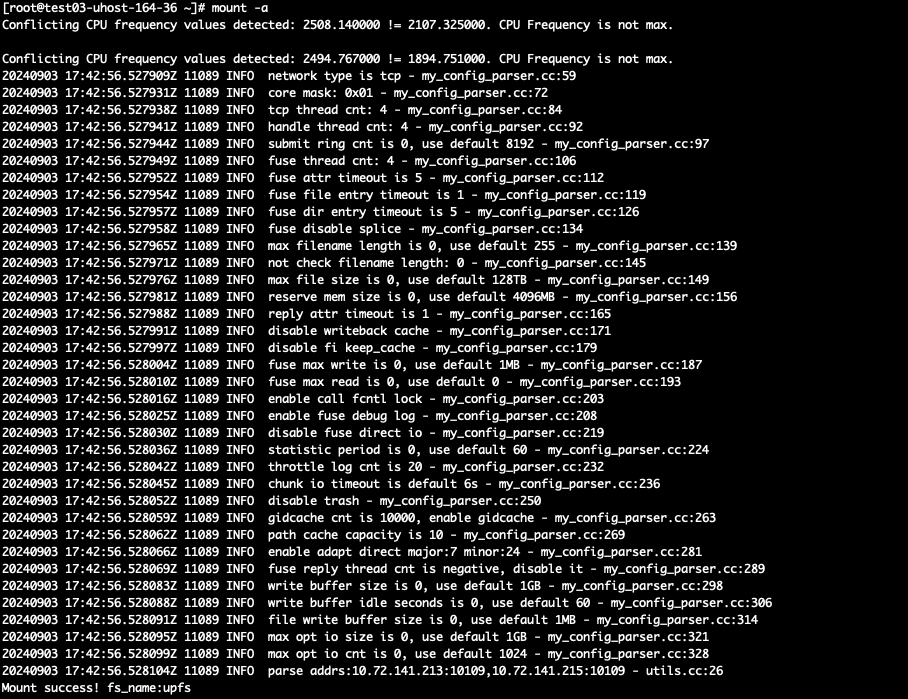Automatically Mounting File Systems
Method 1: Configure the /etc/fstab file to set up automatic mounting
Step 1: Install the client
For client installation steps, refer to “UPFS Client Installation”.
Step 2: Configure automatic mounting on boot
Edit the /etc/fstab file and add the following configuration:
<mount_address1>,<mount_address2>/<resource_id> /path/to/mount upfs _netdev 0 0Example:
10.72.141.213:10109,10.72.141.215:10109/upfs /upfs_data upfs _netdev 0 0| Command Line Field | Explanation |
|---|---|
| <mount_address1>,<mount_address2>/<resource_id> | The file system URL obtained from the Genesis Cloud console page. (For detailed rules of the URL, see the file system URL part in the main concepts) |
| /path/to/mount | The local path to be mounted. Ensure that this directory is not mounted by other file systems |
| upfs | Indicates that the type of the file system to be mounted is upfs |
| _netdev | File system mounting option. Because it is a network file system, _netdev needs to be added. ro, rw are also supported |
| The first 0 | Indicates whether the file system will be backed up by the dump tool. Please keep the configuration as 0 |
| The second 0 | Indicates whether the file system will be checked by the fsck command. Please keep the configuration as 0 |
Step 3: Check the mounting status
After configuring the file, execute the command mount -a to check the mounting status.

Method 2: Use systemd.mount to realize automatic mounting
Step 1
Install the client with reference to Method 1.
Step 2: Configure the file
Create the file /etc/systemd/system/upfs_data.mount and add the following content:
[Unit]
Description=Mount upfs at boot
[Mount]
What=10.72.141.213:10109,10.72.141.215:10109/upfs
Where=/upfs_data
Type=upfs
Options=_netdev
TimeoutSec=30
[Install]
WantedBy=multi-user.target
Note: The name of the mount unit must be named according to the path of the file system mount point it encapsulates. For example, the unit name corresponding to the automatic mount point /mnt/upfs must be mnt-upfs.mount.
Explanation of some fields:
| Field | Explanation |
|---|---|
| What | The file system URL obtained from the UCloud console page |
| Where | The local path to be mounted. Ensure that this directory is not mounted by other file systems |
| Type | Indicates that the type of the mounted file system is upfs |
| Options | File system mounting options. Since it is a network file system, _netdev needs to be added |
| TimeoutSec | Specifies the timeout for the mount operation, in seconds |
| WantedBy=multi-user.target | Specifies under which target this service unit should be started. multi-user.target means starting this service in multi-user mode |
Automatic mounting commands:
systemctl enable upfs_data.mount
systemctl start upfs_data.mountIf there is a problem with automatically mounting the file system, please contact Genesis Cloud technical support in a timely manner.